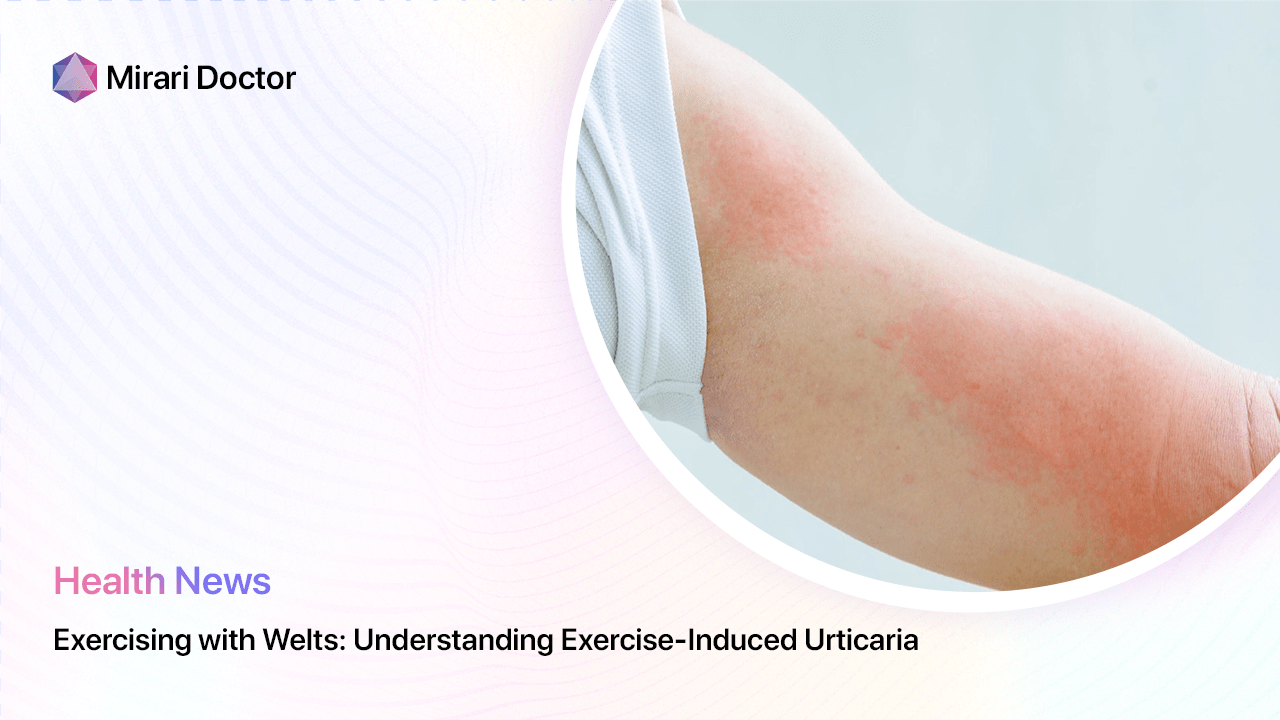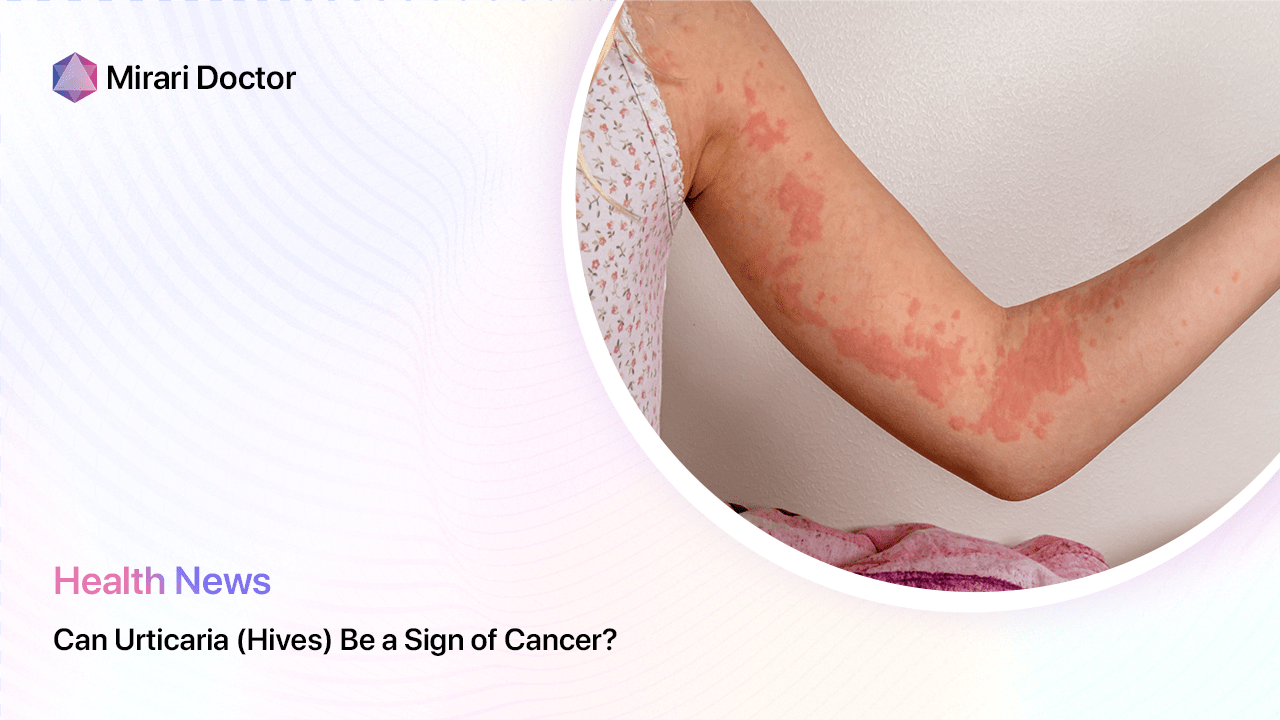
Feeling an intense burning itchiness erupt across your skin, legs wobbling, 30 minutes into a jog through the park – many runners have experienced those annoying mosquito bites that somehow penetrate clothing and torment your workout. But some athletes and active folks discover those raised red welts burst forth even without insects present, mystically appearing whenever they exercise or exert themselves physically.
This condition, known as exercise-induced urticaria (EIU), involves allergic-like hives provoked specifically by physical activity due to bodily changes like increased core temperature. While troubling and often misunderstood, appropriate diagnosis and management allows most patients to resume normal fitness regimens. This guide covers the fundamentals of recognizing, treating, and preventing activity-triggered hive eruptions.
What is Exercise-Induced Urticaria?
Exercise-induced urticaria (EIU) consists of recurrent cases of hives, or urticaria – a red, burning skin rash of swollen welts called wheals – provoked specifically by physical exertion, sports, or targeted fitness training. These physical activity hives tend to appear abruptly within minutes of elevated heart rate, remitted perspiration, or other bodily changes linked to movement and heat generation.
“I never had an issue with hives in day to day life. But 5 minutes into starting any cardio exercise – jogging, basketball, even vigorous house cleaning – my arms and torso erupt with crazy itchy red welts that take hours to fade,” explains Ryan, an athlete with EIU.

Unveiling Exercise-Induced Urticaria
Diagnosing the root factors triggering workout welts facilitates targeted management. Pinpointing specific chemical or temperature thresholds proves challenging but essential.
Diagnosing EIU
No blood marker or simple screening test confirms EIU – meticulous symptom tracking and timed exercise challenges under medical supervision provide the main diagnostic clues, while ruling out other conditions like cholinergic urticaria.
Your doctor may monitor vitals and administer skin allergy testing during graded aerobic activity to help reveal individual exercise and intensity thresholds provoking welts for any identifiable cause. Keeping a detailed fitness and flare diary helps identify patterns.
“By having patients walk on a treadmill at increasing speeds while closely observing skin reactions, we can usually pinpoint the intensity capable of inducing hives so we can then tailor treatment accordingly,” notes Dr. Sasha Yi, dermatology researcher.
Causes and Triggers
The exact mechanisms spurring EIU remain unclear but tend to be highly individualized, linked to personal thresholds for:
- Body heat generation
- Sweat irritation
- Blood vessel dilation
- Pressure or friction
- Rarely, food or medication reactions
Temperature and sweat changes during workouts likely drive mast cell activation and hive release in most EIU patients.

Managing Exercise with EIU
Coping with unpredictable workout welts proves frustrating. However, strategic lifestyle adjustments and medical guidance provide symptom relief while allowing fitness enthusiasts to safely accomplish goals.
Warm-up and Cool-down Strategies
Gradually easing in and out of intense training allows the body to adjust to temperature shifts and heightened exertion associated with hives. This may prevent crossing thresholds provoking flare-ups.
Medication Options
When taken 30-60 minutes prior to activity, preventative antihistamines like fexofenadine may block hive reactions during exercise. Doctors may also prescribe epinephrine for severe swelling risks.
“My allergist worked with me and my trainer to come up with the optimal pre-workout antihistamine regimen so I can jog and lift weights without those awful burning welts erupting all over my body,” shares Frank, fitness buff with EIU.
Alternative Exercises
Switching to lower intensity activities like yoga, pilates, swimming, or walking could circumvent EIU thresholds – but threshold testing proves essential for safety. Consult a sport medicine professional.
“While frustrating at first, working closely with my healthcare team allowed me to discover cycling and strength training tend to avoid provoking my hives so I can still stay active,” says Dana, long-time runner who developed EIU.
Living with Exercise-Induced Urticaria
Despite unpredictable skin eruptions during workouts, those with proper guidances can maintain fitness and thrive with EIU through strategic planning, communication, and motivation.
Maintaining an Active Lifestyle
Having setbacks from sudden hive flares proves understandably discouraging. But repeatedly testing personal thresholds for triggers while adjusting approaches eventually reveals paths enabling active living.
“I learned that by taking two different antihistamines an hour before my long weekend runs, I could finally train for half marathons without horrible itchy hives taking over my body at mile three,” shares a patient.
Planning and Communication
Scheduling activities during typical non-flare windows while noting hive or medication effects provides insights on managing recurrent EIU. Alerting trainers regarding special needs prevents misunderstandings.
Overall, staying positive and pursuing creative solutions to craft a personalized regimen capable of fulfilling athletic aspirations allows those with EIU to thrive fitness-wise. Proper healthcare guidance makes achieving this possible.
In summary, exercise-induced hives represent the body sounding an immunologic alarm regarding something internal occurring during physical exertion across personal thresholds. But decoding the signals and adjusting approaches provides the quieting reassurance one can continue to reap the physical and mental benefits – as well as sheer joy – from a good sweat session done in a way harmonizing with unique biology.
Key Takeaways
- Exercise-induced urticaria (EIU) causes red, itchy skin welts to erupt during or after physical activity due to personal temperature or exertion limits.
- Preventative antihistamines, alternate training approaches, and tailored lifestyle measures facilitate fitness while preventing activity-triggered hives.
- Close healthcare guidance helps create personalized management plans capable of fulfilling athletic aspirations despite exercise-provoked urticaria.
FAQs About Exercising with Hives
What are the symptoms of EIU?
The hallmark EIU symptom involves hives – red, swollen, intensely itchy rashes – appearing during or shortly after physical activity across personal triggers like temperature limits.
How do doctors test for and diagnose EIU?
Diagnosing EIU requires tracking symptoms during graded exercise challenge under doctor supervision to pinpoint thresholds triggering flare ups for cause analysis and management planning.
Can I still exercise with exercise-induced urticaria?
Yes, most EIU patients can remain physically active with preventative antihistamines, activity modifications, pacing methods, and tailored treatment approaches determined through exact trigger identification.
What medications help manage hives during workouts?
Preventative second generation antihistamines like cetirizine, as well as emergency epinephrine for swelling reactions, help control EIU episodes when taken before planned exercise after proper diagnosis.
Are there certain alternative exercises I can try safely?
After identifying exact individual exercise thresholds triggering hives through testing, switching intensity levels or training types can uncover tolerable regimens – but this requires guidance. Yoga, swimming, walking provide options depending on situation.
By adopting a pacing mindset combined with resilience, creativity, healthcare support, and recent scientific insights, those suffering from exercise-induced hives can continue pursuing cherished athletic pastimes or taking up new sports capable of boosting mental health. With the right preparation and planning, your body can learn to harmonize with workouts in a way minimizing troubling skin reactions. Proper management tips the balance towards possibility.
Related articles
Made in USA






